Exploring the 4th Industrial Revolution in Technology
Manish Kumawat
Last Updated on: 07 October 2025
Since ancient times, men have been in search of better ways to produce things. These thoughts made them think out of the box. When we look into history, the Industrial Revolution began in the 1700s. Now it has reached the 4th industrial revolution with the integration of trending technologies, including artificial intelligence (AI), the Internet of Things (IoT), biotechnology, and advanced materials.

Today in this 4IR scenario, robots deliver pizza, self-driving cars navigate our roads, and virtual reality transports us to other worlds. It seems like something out of a futuristic fantasy. But guess what? We're living in the future now! Technology nowadays has changed every aspect of our lives, including work and entertainment. It is estimated that there will be approximately 29 billion linked devices on the earth by 2023. (Source)
Understanding the term ‘Fourth Industrial Revolution (4IR)’
In simple words, the Fourth Industrial Revolution (4IR) is all about how technology is reshaping our lives and industries in ways we never thought possible. Unlike the previous revolutions that focused on steam, electricity, and computers, 4IR is driven by the fusion of digital, physical, and biological worlds. Think of it as a high-tech mashup where everything from artificial intelligence to robotics, the Internet of Things (IoT), and biotechnology comes together.
Imagine your smart home: your fridge can tell you when you’re low on groceries, and your thermostat learns your preferences to save energy. That’s 4IR in action! It’s not just about convenience, though; it’s changing how businesses operate too. For instance, factories are using smart machines that can predict maintenance needs, leading to less downtime and more efficiency.
Then there’s the healthcare angle. With wearables that track your health in real-time, doctors can make better-informed decisions, leading to personalized treatment plans. Just like a tiny doctor in your pocket!
In everyday life, social media algorithms analyze your interests to show you content you’re likely to engage with. While this can be fun, it also raises questions about privacy and how much tech knows about us.
So, the 4IR is a game-changer, blending tech into our daily routines and altering entire industries. It’s exciting but also makes us think about what it means for jobs, ethics, and how we interact with each other. The future is definitely here, and it’s buzzing with potential!
The term "4th Industrial Revolution" was popularized by Klaus Schwab, the founder of the World Economic Forum, in his 2016 book, "The Fourth Industrial Revolution." Schwab describes it as a technological revolution that is fundamentally altering how we live, work, and relate to one another.
Key Technologies Driving 4IR
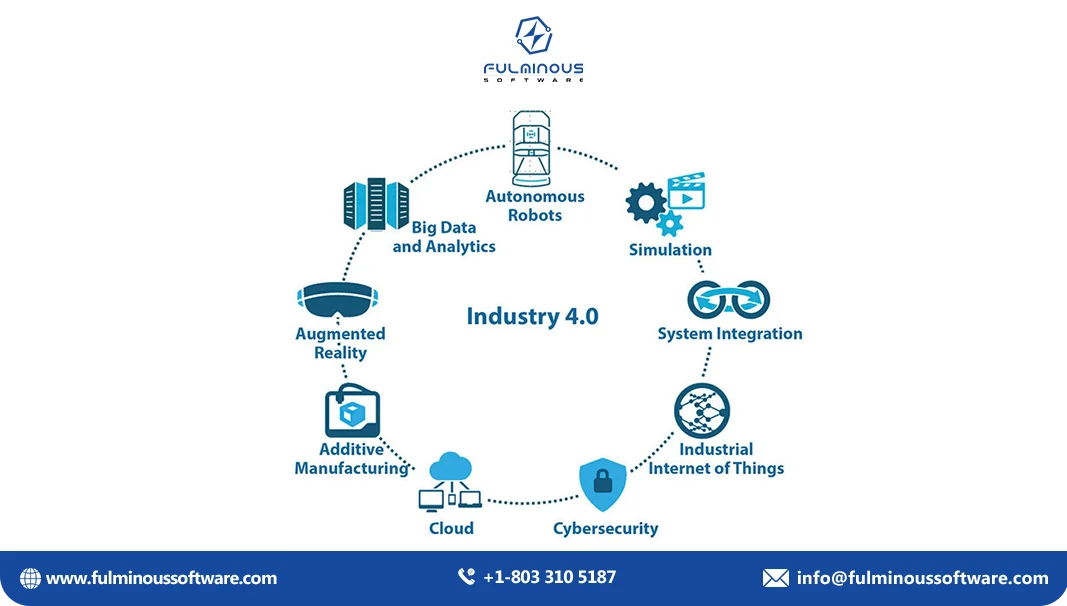
The Fourth Industrial Revolution (4IR) is a tech-driven revolution. Here’s a closer look at key technologies driving the 4IR:
- Artificial Intelligence (AI): AI is like giving computers a brain so they can do things that usually need human smarts. This includes recognizing faces, understanding speech, making choices, and translating languages. Thanks to new techniques like machine learning, AI can help with things like self-driving cars and personalized healthcare.
- Internet of Things (IoT): The IoT is a group of everyday devices that can connect to the internet and talk to each other. This means things like smart fridges and thermostats can work together to make our lives easier. They can help us keep track of our homes and save energy, making everything run more smoothly.
- Blockchain: Blockchain is a secure way to keep track of transactions and information without needing a middleman, like a bank. It’s most famous for being the technology behind cryptocurrencies like Bitcoin. But it can also be used for things like tracking products in stores, ensuring medical records are safe, and making voting more trustworthy.
- Biotechnology: Biotechnology is about using living things, like plants and bacteria, to solve problems. With new tools like CRISPR, scientists can change genes to make healthier crops or create medicines just for you. This helps with food, health, and even taking care of our planet.
- Advanced Materials: This is about making new types of materials that are super strong, light, and can change based on what they need to do. These materials can improve everything from buildings to planes and electronics, making them better and more efficient.
- Robotics and Automation: Robotics is all about using machines to do tasks that people usually do. This includes robots in factories or drones that fly around. These technologies make work faster and easier by reducing the need for people to do the same tasks over and over.
The 4IR: A Manufacturing Revolution
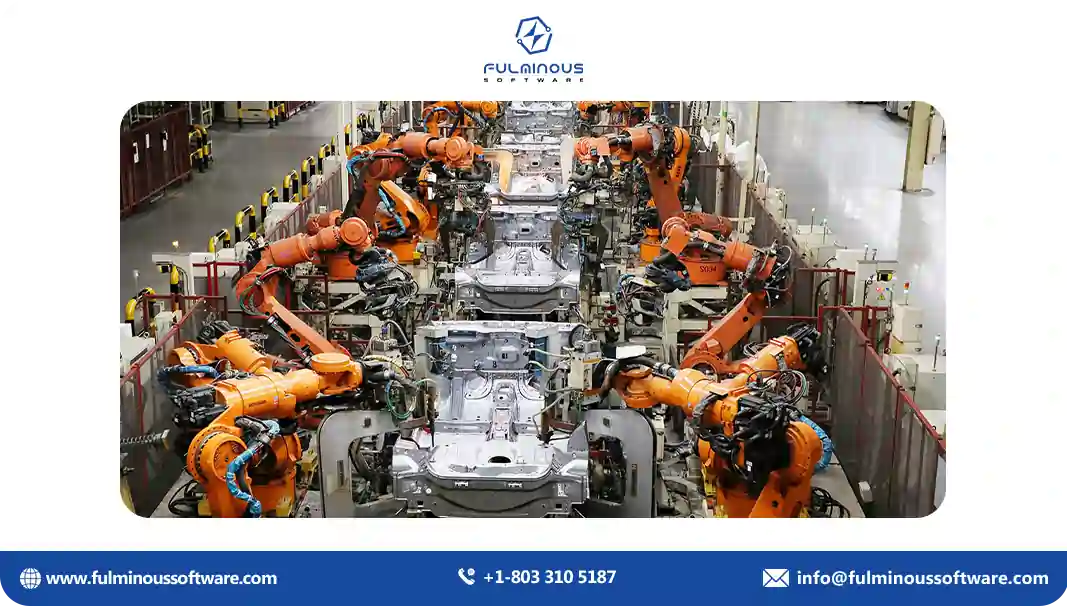
The changes that occurred in the manufacturing sector as a result of 4IR are remarkable. Remember when factories were filled with people working on assembly lines? Those days are changing fast! Welcome to the 4th Industrial Revolution (4IR), where cool technology is changing how things are made.
Robots Taking Over
One of the biggest changes in manufacturing is the use of robots. These aren't the old, clunky robots you see in movies. Today’s robots are super precise and can do jobs that are too dangerous or boring for people, like welding and assembling parts. For example, Tesla uses many robots in their factories to build electric cars.
Smart Factories
Another cool trend is the rise of "smart factories." These factories use sensors to keep track of things like temperature and humidity, making sure everything is just right for making products. They also use data to find problems in the production process and suggest ways to fix them.
Customization at Scale
Thanks to the 4IR, companies can now create customized products easily. With technologies like 3D printing, businesses can let customers design their own shoes or glasses, making each item unique while still producing a lot of them.
Supply Chain Revolution
The 4IR is changing how companies manage their supply chains, which is how they get materials and products to customers. With tools like blockchain, businesses can see where their products are at all times. This helps them save resources, work more efficiently, and keep products safe.
Challenges and Opportunities
While the 4IR brings many advantages, it also has challenges. One worry is that robots and automation might take away some jobs. But there’s good news too! The 4IR is creating new jobs in areas like data science, robotics, and cybersecurity. Overall, the 4IR is changing manufacturing in a big way.
How Manufacturing Business Can Benefit of The Fourth Industrial Revolution (4IR)
The Fourth Industrial Revolution (4IR) offers numerous benefits to manufacturing businesses, including:
Increased Efficiency and Productivity:
- Automation: Robots and automation technologies can perform tasks faster, more accurately, and with fewer errors than humans.
- Optimized Processes: Businesses may improve their operations and cut waste by using data analytics and IoT to find production process inefficiencies and inefficiencies.
Improved Quality:
- Precision and Accuracy: Advanced technologies like 3D printing and robotics can produce products with greater precision and accuracy, leading to higher quality standards.
- Quality Control: IoT sensors can ensure that products meet quality standards and identify defects before they worsen by continuously monitoring production operations.
Enhanced Flexibility and Customization:
- Customization: Technologies like 3D printing and additive manufacturing allow businesses to produce highly customized products at scale, meeting the diverse needs of consumers.
- Flexibility: Smart factories can quickly adapt to changes in demand or product specifications, providing greater flexibility and responsiveness.
Reduced Costs:
- Efficiency Gains: Increased efficiency and productivity can lead to reduced labor costs and waste, resulting in lower overall costs.
- Predictive Maintenance: IoT sensors can predict equipment failures, allowing businesses to schedule maintenance proactively and avoid costly downtime.
Competitive Advantage:
- Innovation: The 4IR can drive innovation in manufacturing, allowing businesses to develop new products and services that differentiate them from competitors.
- Digital Transformation: Businesses that embrace the 4IR can gain a competitive advantage by leveraging digital technologies to improve their operations and customer experience.
Examples of Benefits:
- Tesla: Tesla's factories use a fleet of robots to build their electric cars, achieving high levels of efficiency and quality.
- GE Additive: GE Additive uses 3D printing to produce customized components for jet engines, reducing lead times and costs.
- Siemens: Siemens' smart factories use data analytics and IoT to optimize production processes and improve energy efficiency.
The Fourth Industrial Revolution (4IR) Reshaping Other Industries
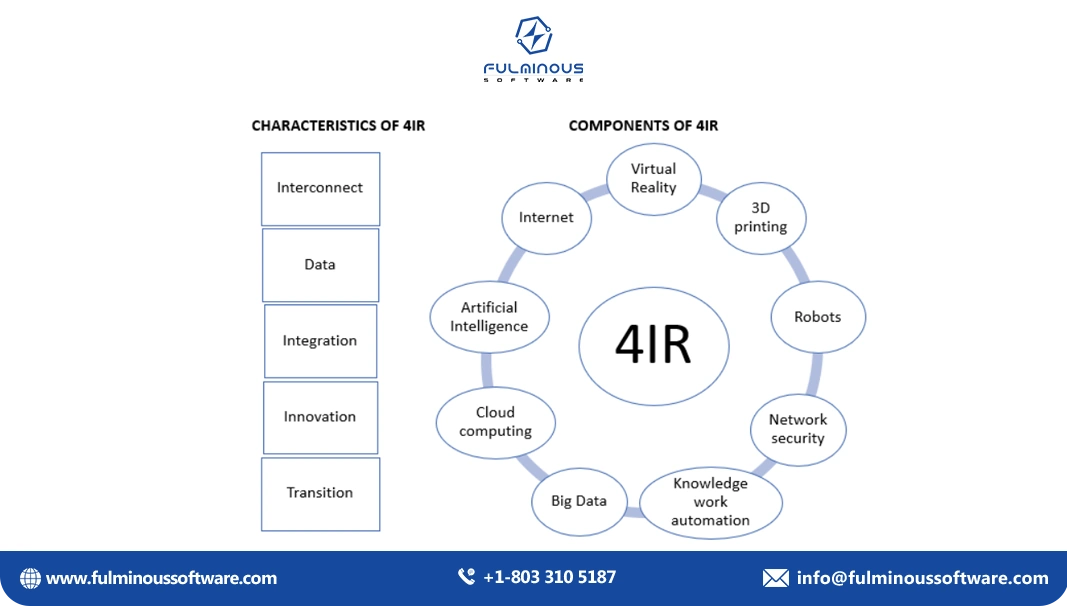
- Healthcare: In healthcare, new tech like AI and biotechnology is making a big difference. Through the analysis of medical data, AI can assist physicians by proposing diagnoses and courses of action. Telemedicine is also becoming popular, which lets patients see doctors from home through video calls. Plus, personalized medicine is changing how treatments are given, using genetic info to tailor care for each patient.
- Agriculture: Farming is getting a tech upgrade with precision farming. This means using tools like IoT sensors, drones, and AI to take better care of crops. Farmers can now monitor things like soil health and weather, helping them use their resources smarter. This leads to bigger harvests and better farming practices that are good for the environment.
- Transportation: The transportation industry is changing thanks to self-driving cars, electric vehicles, and smart traffic systems. Companies like Tesla and Waymo are leading the way in making cars that can drive themselves. Cities are also using smart systems to manage traffic better, which helps reduce jams and makes roads safer.
- Finance: In finance, blockchain technology is shaking things up by making transactions safer and clearer. Cryptocurrencies and decentralized finance (DeFi) are offering new ways to lend, invest, and send money, changing how banks work. Smart contracts help automate deals, so people can make agreements without needing a middleman.
- Energy: Smart grids and renewable energy sources are becoming more prevalent in the energy industry. With tools like IoT and AI, we can better manage how we use energy, predict how much we’ll need, and connect different energy sources. This shift is important for fighting climate change and reducing our dependence on fossil fuels.
- Education: In education, technology is changing how students learn. Online learning platforms and apps make it easier to access classes from anywhere. AI can personalize learning by adapting lessons to each student’s needs, helping them learn at their own pace. Additionally capable of producing immersive experiences, virtual reality (VR) can enhance interest in disciplines like science and history.
- Retail: The retail industry is transforming with technologies like online shopping, AI recommendations, and smart checkout systems. Stores use AI to analyze customer preferences, suggesting products that shoppers might like. Contactless payments and self-checkout kiosks make shopping faster and more convenient, while augmented reality (AR) lets customers try products virtually before buying.
- Hospitality: The hospitality industry is also evolving through technology. Hotels are using smart systems to manage bookings and personalize guest experiences. AI-powered chatbots can assist customers with questions, while mobile apps allow guests to check in and control room features from their phones. This makes stays more enjoyable and efficient.
- Construction: In construction, advanced technologies like drones and Building Information Modeling (BIM) are changing how buildings are designed and built. Drones can survey land and inspect sites more easily, while BIM helps architects and builders visualize projects in 3D before starting. These innovations lead to safer, faster, and more cost-effective construction processes.
Global Economic Impact of 4IR
Economic Growth
The 4IR can really boost the economy! Experts say that technologies like AI, IoT, and automation could add about $14 trillion to the world economy by 2030. Companies that use these technologies are likely to be more productive and competitive, helping them grow and succeed.
Developing Economies
While richer countries might be the first to use 4IR technologies, poorer countries have a chance to skip some old ways of doing things. By using new digital tools and creative solutions, these nations can work better, improve healthcare, and grow in a way that’s good for the environment.
Global Collaboration
To make the best of the 4IR, people need to work in collaboration. Governments, businesses, and schools should team up to tackle common challenges. Partnerships across countries will be important for advancing research, setting rules, and creating guidelines that encourage new ideas while also protecting everyone’s interests.
Challenges Ahead for 4IR
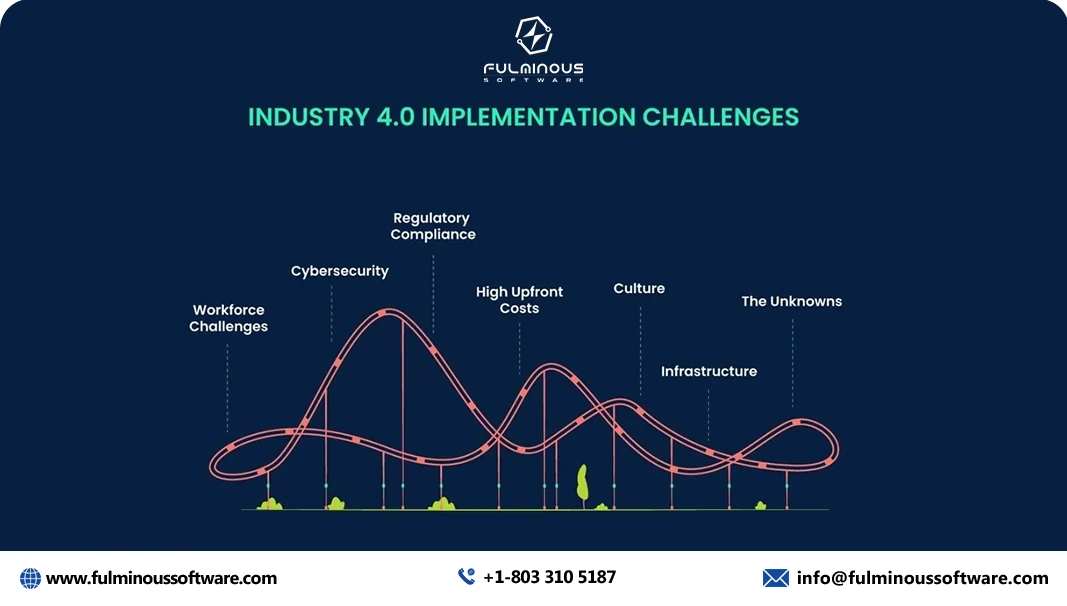
- Job displacement due to automation
- Skills Gap
- Data Privacy
- Cybersecurity Threats
- Inequality
One big challenge is that many jobs might disappear because of robots and automation. Machines can do tasks faster and sometimes better than humans, which means some people might lose their jobs or have to find new ones.
As technology changes, workers need new skills to keep up. Not everyone has access to the training they need, which can make it hard for some people to find good jobs. Schools and training programs need to adapt to teach the skills that are in demand.
With all the new technology, a lot of personal data is being collected. This raises concerns about privacy—people worry about who has access to their information and how it’s being used. Protecting this data is really important to keep everyone safe.
Cyberattacks become more likely as more gadgets are connected to the internet. Hackers can target companies and steal sensitive information, which can lead to big problems for both businesses and customers. Strong cybersecurity measures are needed to defend against these threats.
Not every individual and group has equal access to new technologies. Some communities or countries may fall behind because they can’t afford the latest tools or training. This can create a gap between those who benefit from the 4IR and those who don’t, leading to more inequality in society.
These challenges need to be addressed so that everyone can benefit from the exciting changes that the Fourth Industrial Revolution brings!
Fourth Industrial Revolution vs. Digital Transformation
| Feature | Fourth Industrial Revolution | Digital Transformation |
|---|---|---|
| Scope | Broader, encompassing societal and economic impacts | Primarily focused on business operations and strategies |
| Key Technologies | AI, IoT, big data, robotics | E-commerce, CRM, marketing automation, supply chain management, data analytics |
| Goals | Create new jobs, change sectors, and pose social issues | Improve efficiency, reduce costs, enhance customer experience, gain competitive advantage |
| Relationship | Provides the technological foundation | A specific application of the 4IR |
| Examples | Autonomous vehicles, smart cities, personalized medicine | Online shopping, mobile banking, social media marketing |
| Challenges | Job displacement, privacy concerns, ethical dilemmas | Lack of knowledge, worries about security, and opposition to change |
| Opportunities | sustainable development, more production, and better quality of life | New business models, increased revenue, enhanced customer loyalty |
| Impact | Fundamental shifts in society, economy, and culture | Significant changes in business operations and strategies |
Making the Most of the 4IR
So, if you want your business to thrive in this new era, you gotta be all about innovation. Encourage your team to think outside the box, come up with new ideas, and figure out how to make things better for your customers. Regular brainstorming sessions can be a game-changer.
The 4IR is all about change, so you need to be flexible. Keep an eye on what's happening in your industry and be prepared to adjust your plans. Maybe that means offering new products or services or exploring new markets.
Collaboration is key too. Partner with other businesses, suppliers, and even your customers. You might learn something new or discover hidden opportunities.
Remember, learning is a never-ending process. Invest in training and development for your team. It'll boost their morale and prepare them for future challenges. Lastly, don't forget about sustainability.
Collaborate with a Tech Company to Make the Most of the 4IR
If you want to make the most of this 4IR thing, partnering with a tech company is an ideal option. First, figure out exactly what you want to achieve and find a company that's on the same page. Communication is key, so keep the lines open and brainstorm together. See what works by experimenting with some new concepts.
A leading technology service provider company like Fulminous Software can help you to get the maximum benefits of 4IR. As they are updated, you will get the best solution from them.
Conclusion
In simple words, the 4th Industrial Revolution has had a big impact on all sectors. The opportunities and features that 4IR offers will define the overall growth of businesses. Understanding the leading technologies in this impactful revolution and timely integration can boost the growth of businesses in all sectors.
When you make the maximum use of these changes, you can be a leading business in your sector. Especially for manufacturers, the overall process can be made easy, fast, and efficient. Digital transformation is the one major part of 4IR.
There are also several challenges for the 4th Industrial Revolution. But history shows that there are solutions along with these challenges. 4IR also has a great impact on multiple dimensions of global aspects.
If you are a businessman, interested in making maximum use of these amazing changes, then this is the most suitable opportunity for you. Collaborate with us today!
FAQs
- Q1: What is the Fourth Industrial Revolution (4IR)?
- A: The 4IR is a big change where technology, machines, and living things come together to change how we live and work.
- Q2: What technologies drive the 4IR?
- A: Important technologies include smart computers (AI), connected devices (IoT), secure online records (blockchain), and robots, making things easier and faster.
- Q3: How does 4IR impact manufacturing?
- A: The 4IR brings machines that work by themselves, smart factories, and the ability to make products just for you, making everything better.
- Q4: What role does AI play in the 4IR?
- A: AI helps computers make smart choices, do tasks automatically, and give personal help in areas like health and finance.
- Q5: How can IoT transform everyday life?
- A: IoT connects devices so your home and city can be smarter, using less energy and making everyday tasks easier.
- Q6: What are the challenges of the 4IR?
- A: Challenges include job loss because of machines, worries about privacy, online security risks, and not everyone having access to new tech.
- Q7: How does the 4IR affect healthcare?
- A: The 4IR helps healthcare with online doctor visits, personalized treatments, and tracking health in real-time, leading to better care.
- Q8: What are the benefits of blockchain technology in 4IR?
- A: Blockchain makes online transactions safe and clear, helping with money transfers and keeping medical records secure.
- Q9: How does the 4IR promote sustainability?
- A: The 4IR helps use resources wisely and save energy, which is good for the environment in farming and manufacturing.
- Q10: What is the importance of collaboration in the 4IR?
- A: Working together with governments, businesses, and schools is important to solve problems, create new ideas, and make the most of the 4IR.
HIRE A TOP SOFTWARE DEVELOPMENT COMPANY
 Verified
Expert in Software & Web App Engineering
Verified
Expert in Software & Web App Engineering
I am Manish Kumawat, co-founder of Fulminous Software, a top leading customized software design and development company with a global presence in the USA, Australia, UK, and Europe. Over the last 10+ years, I am designing and developing web applications, e-commerce online stores, and software solutions custom tailored according to business industries needs. Being an experienced entrepreneur and research professional my main vision is to enlighten business owners, and worldwide audiences to provide in-depth IT sector knowledge with latest IT trends to grow businesses online.
Partner with Top-Notch Web Application Development Company!
Discuss your Custom Application Requirements on info@fulminoussoftware.com or call us on +1-903 488 7170.
15 Days Risk-Free Trial

